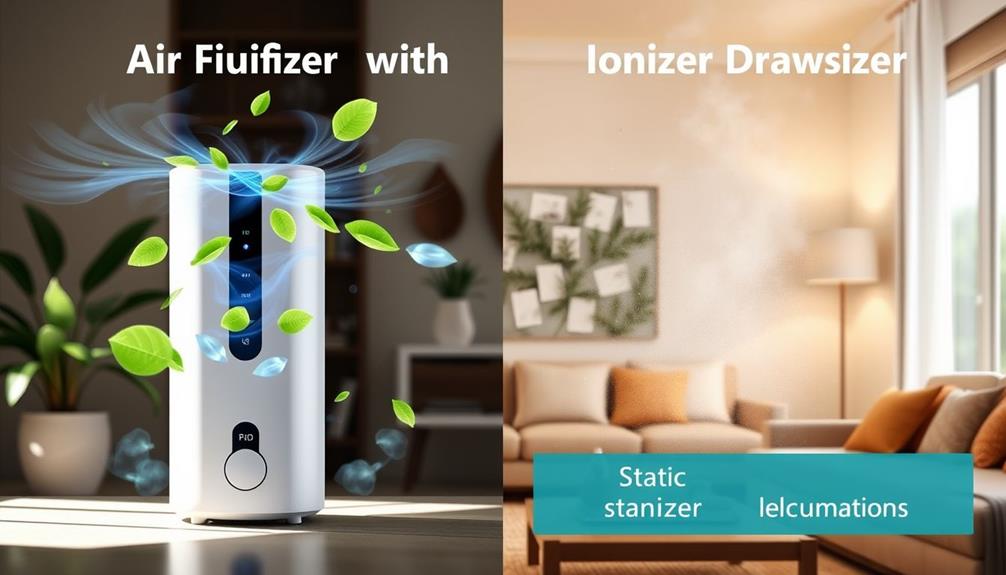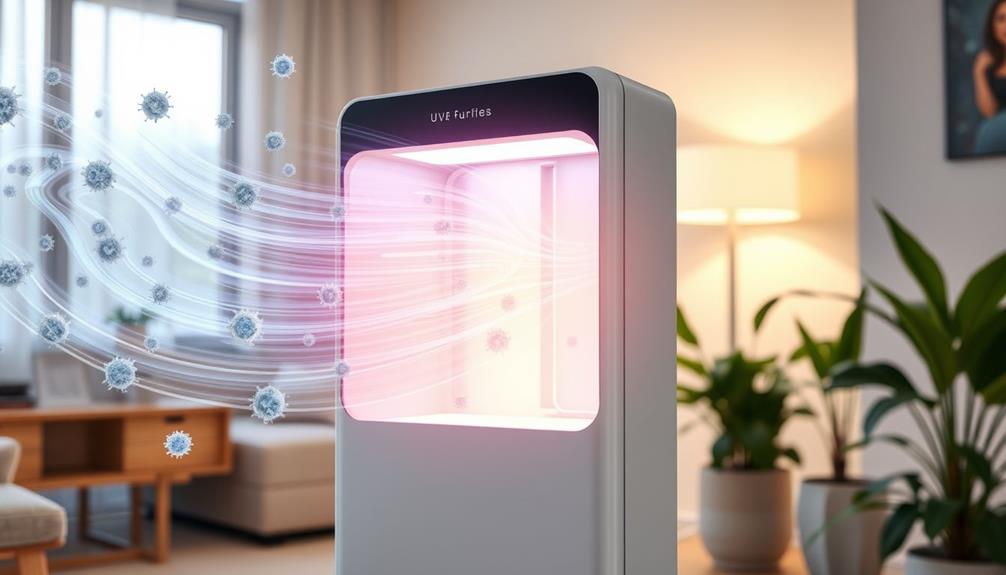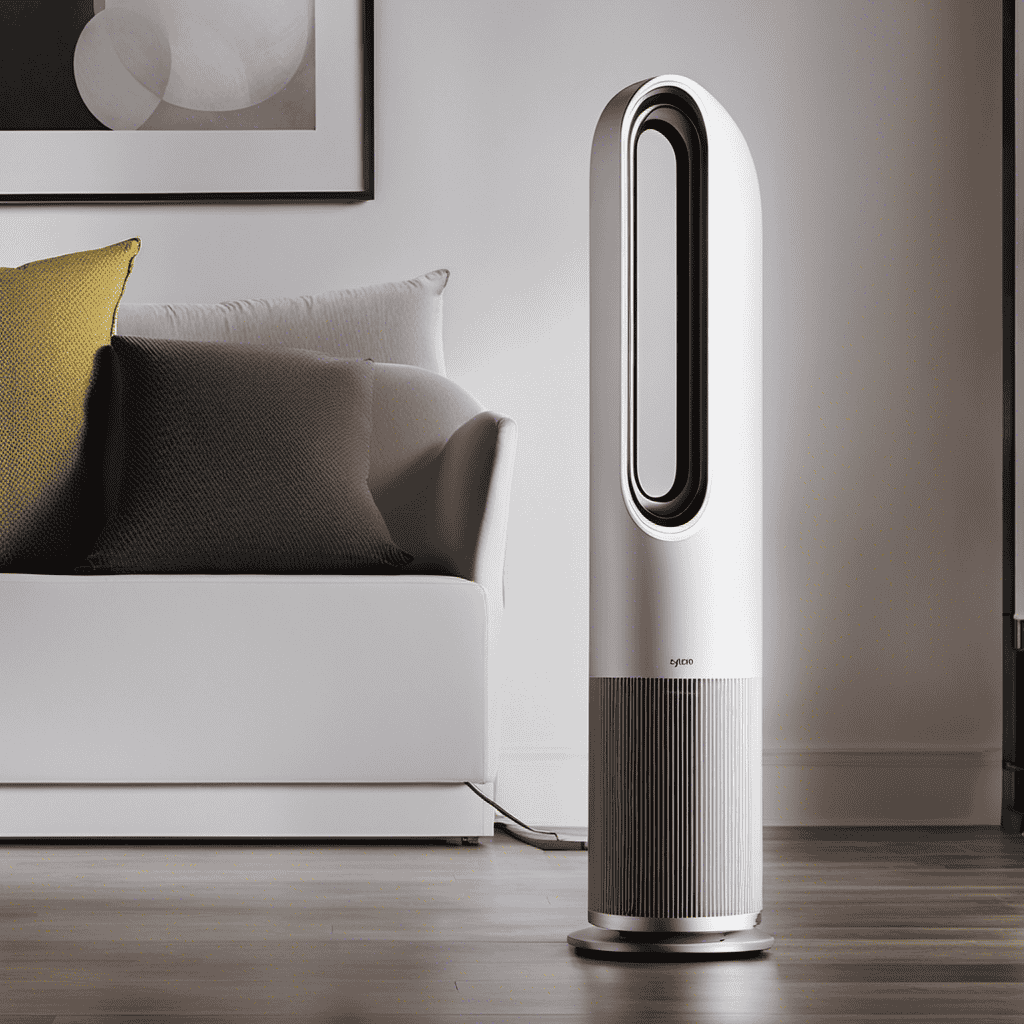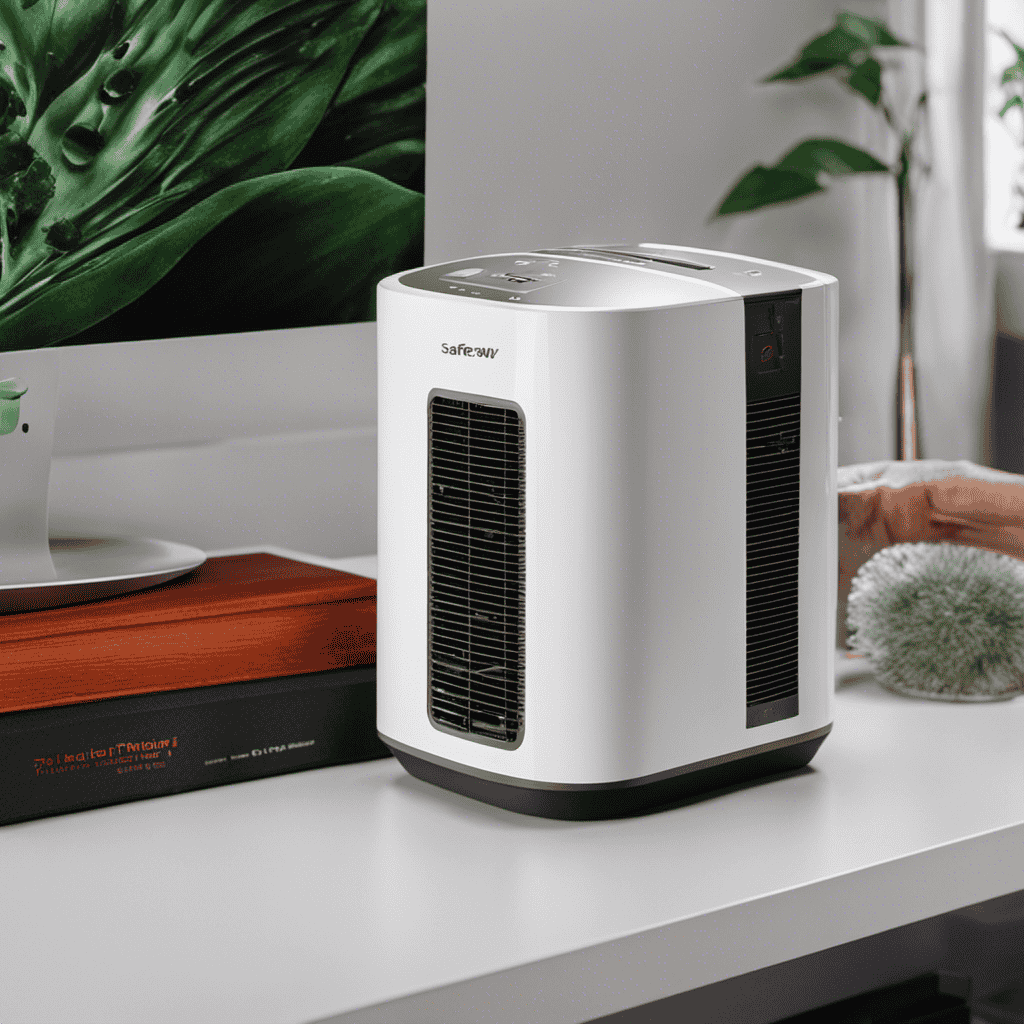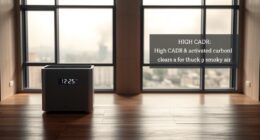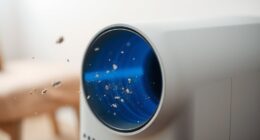Using the ionizer function in air purifiers can boost your indoor air quality by reducing airborne particles and allergens. However, it also has downsides. Most ionizers struggle with larger particles like dust and pollen, which can still affect your allergies. Additionally, some models generate ozone that can aggravate respiratory issues, especially for those with asthma. While they require less maintenance than traditional air cleaners, their effectiveness varies. Understanding these pros and cons will help you make informed choices for your indoor air purity. You'll discover more insights on maximizing your air quality as you explore further.
Key Takeaways
- Ionizers release negative ions that can improve air quality by reducing small airborne particles, but they are ineffective against larger allergens like dust and pollen.
- Many ionizers produce ozone as a byproduct, which can worsen respiratory issues and contribute to health risks.
- Ionizers may enhance mood and immune function but have limited research support compared to traditional air cleaners.
- Particles may settle on surfaces rather than being filtered, creating a false sense of air cleanliness.
- Regular monitoring and choosing high-efficiency filtration systems are essential for effective indoor air quality management.
Understanding Air Ionizers
Air ionizers are fascinating devices that can enhance the quality of the air you breathe indoors. These air cleaning devices release negative ions, which attach to particles in the air, causing them to clump together. This process makes it easier for you to clean surfaces since the larger clusters of particles settle down rather than floating around.
While air ionizers can effectively target small airborne particles, such as tobacco smoke, they're generally less effective against larger particles like dust and pollen. Additionally, ozone air purifiers offer a different method of tackling air quality issues by releasing ozone molecules that neutralize pollutants.
It's essential to recognize that many ionizers produce ozone as a byproduct. Elevated levels of ozone can aggravate respiratory issues and pose potential health effects, especially for sensitive individuals.
Additionally, the effectiveness of air ionizers in pollutant removal is often hard to measure, and independent studies can sometimes yield unverified results.
Health Benefits of Ionizers
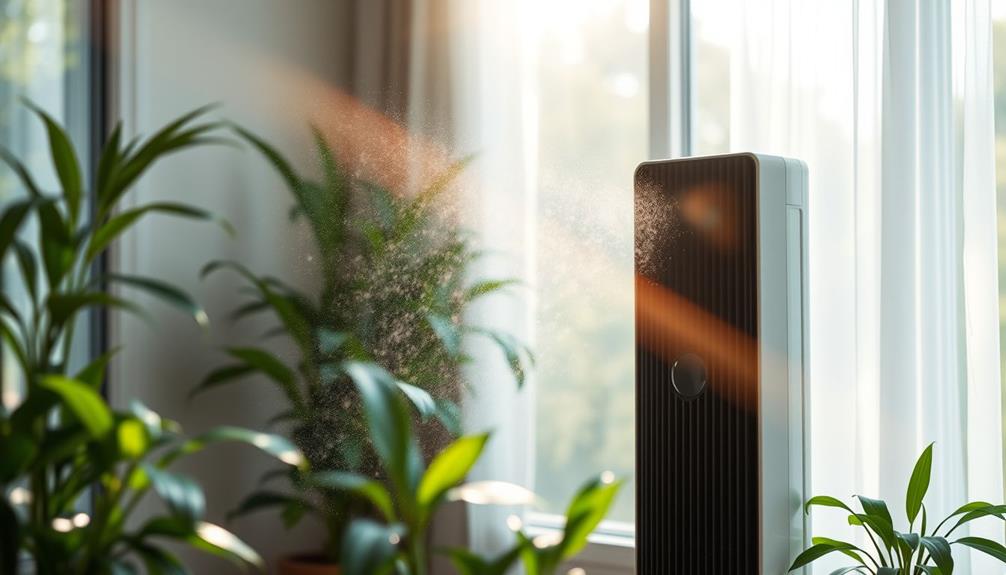
Ionizers can markedly enhance your indoor environment by improving air quality and potentially benefiting your health. These devices release negative ions that attach to airborne particles, such as allergens, mold spores, and pollutants, causing them to settle out of the air. This can be particularly helpful if you struggle with respiratory issues, like asthma, as it reduces the number of irritants you inhale.
Additionally, pet owners should be mindful of maintaining a clean environment, as dogs can contribute to indoor allergens like dander and dust, making dog health and nutrition an essential consideration in overall air quality.
Research indicates that negative ions produced by ionizers can inhibit the growth of certain viruses, further suggesting a role in improving overall air quality. Additionally, these ions might boost your immune function by decreasing harmful airborne particles, thereby lowering the risk of respiratory infections.
You may also experience improvements in mood and stress levels, as some studies suggest negative ions can enhance mental well-being and help regulate sleep patterns.
While ionizers are effective at reducing smaller airborne particles, their impact on larger allergens like dust and pollen is limited. Nonetheless, the potential health benefits of using ionizers in air purifiers can make a significant difference in your indoor air quality and overall well-being.
Drawbacks of Ionizers
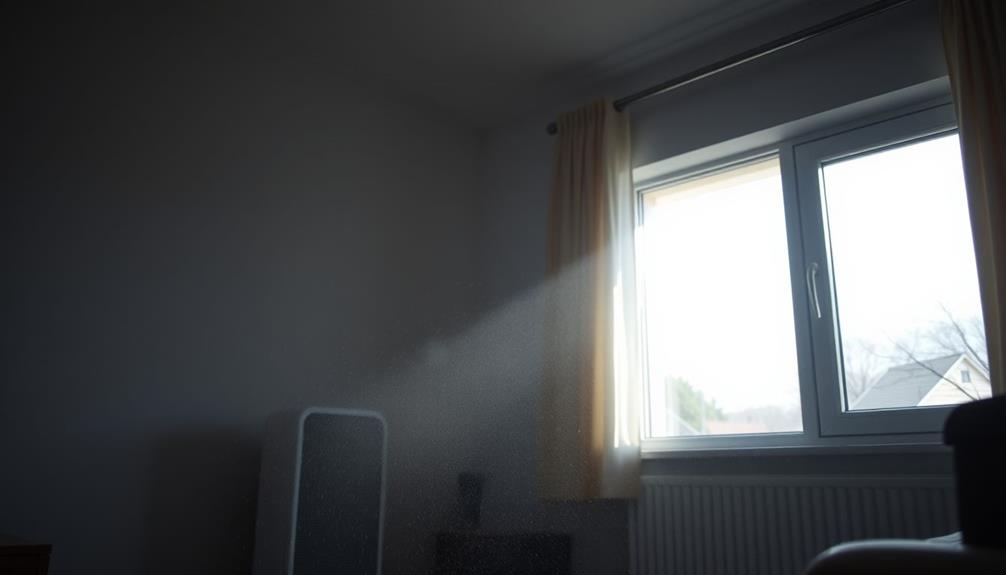
While ionizers offer potential health benefits, they also come with significant drawbacks that shouldn't be overlooked. Many ionizers struggle to effectively reduce larger particles like dust and dander, which can trigger allergies and asthma, similar to the issues faced by individuals with coughing and phlegm due to environmental irritants. Instead of improving air quality, these ionizers can actually increase PM2.5 levels through chemical reactions, making your environment worse.
One major concern is ozone production. Ozone-generating air cleaners release this lung irritant as a byproduct, potentially exacerbating respiratory conditions, particularly in individuals with asthma. Additionally, some ionizers may generate harmful volatile organic compounds (VOCs) that can lead to health problems such as irritation and headaches, negating any potential pollutant removal benefits.
You might also find that particles accumulate on surfaces rather than being actively filtered from the air. This can create a false sense of cleanliness, as harmful airborne particles remain unaddressed.
To conclude, while ionizers promise cleaner air, their drawbacks—including ineffective pollutant removal and potential health risks—are critical considerations you shouldn't ignore when evaluating your air purification options.
Comparing Ionizers and Air Cleaners

When it comes to improving indoor air quality, understanding the differences between ionizers and air cleaners can help you make an informed choice. An Air Ionizer releases negative ions that attach to airborne particulate matter, causing them to clump together and settle on surfaces. However, they don't actively filter out larger particles like dust and dander. In contrast, air cleaners, especially those with HEPA filters, excel at removing large particles and provide a higher Clean Air Delivery Rate (CADR).
| Feature | Air Ionizer | Air Cleaners |
|---|---|---|
| Method of Operation | Ionization device for pollutant removal | Mechanical filtration |
| Particle Size Removal | Less effective for large particles | Effective at removing large particles |
| Ozone Emission | Can produce ozone | Generally ozone-free |
| Maintenance | Low upkeep | Requires regular filter changes |
| Peer-Reviewed Studies | Limited research | Extensive studies support efficacy |
While ionizers may enhance air cleaner performance by reducing particle size, their effectiveness can diminish if particles settle instead of being collected. Therefore, knowing these differences can guide your decision for effective air purification.
Ozone Emission Concerns
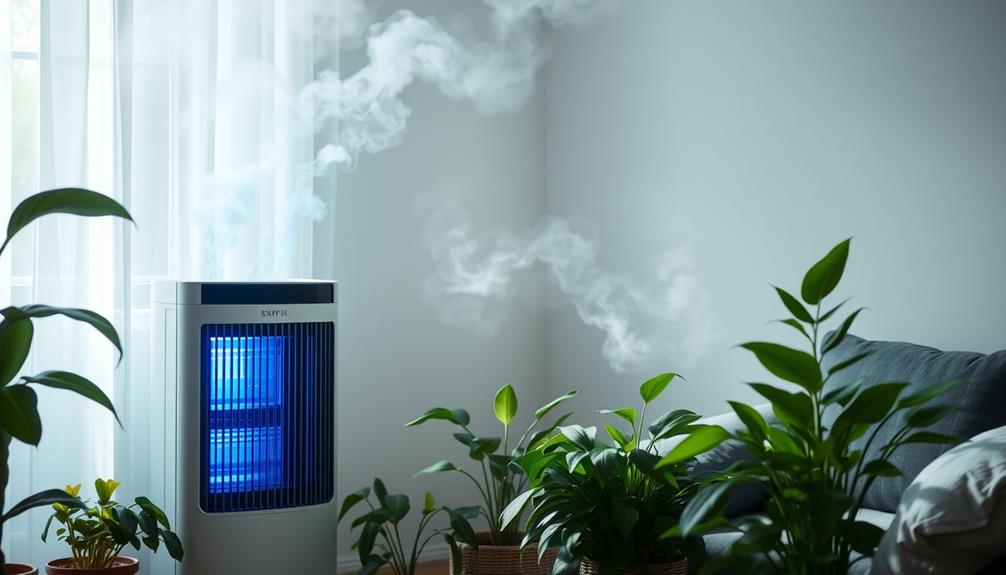
If you're contemplating an ionizer for improving your indoor air quality, it's important to be aware of ozone emission concerns.
Ionizers can produce ozone as a byproduct, which acts as a lung irritant and can worsen respiratory issues, especially for those with asthma or other lung conditions. Many households prioritize safety and reliability in their home environments, and understanding the implications of home security systems can be as important as ensuring clean air.
The FDA regulates ozone emissions from medical devices to a safe level of 0.05 parts per million (ppm), but many ionizers can exceed this limit under certain conditions.
Prolonged exposure to elevated ozone levels can result in reduced lung function and increase the risk of respiratory infections. Additionally, ozone generated by ionizers can interact with indoor pollutants, potentially raising levels of harmful volatile organic compounds (VOCs) rather than aiding in pollutant removal. This interaction can further complicate your indoor air quality.
It's important to examine the regulatory standards for ozone emissions from air purifiers, which vary by region.
Unfortunately, many consumers remain uninformed about the potential health risks associated with ozone exposure. Weighing these concerns is significant before deciding to use an ionizer to enhance your indoor environment.
Recommendations for Indoor Air Quality
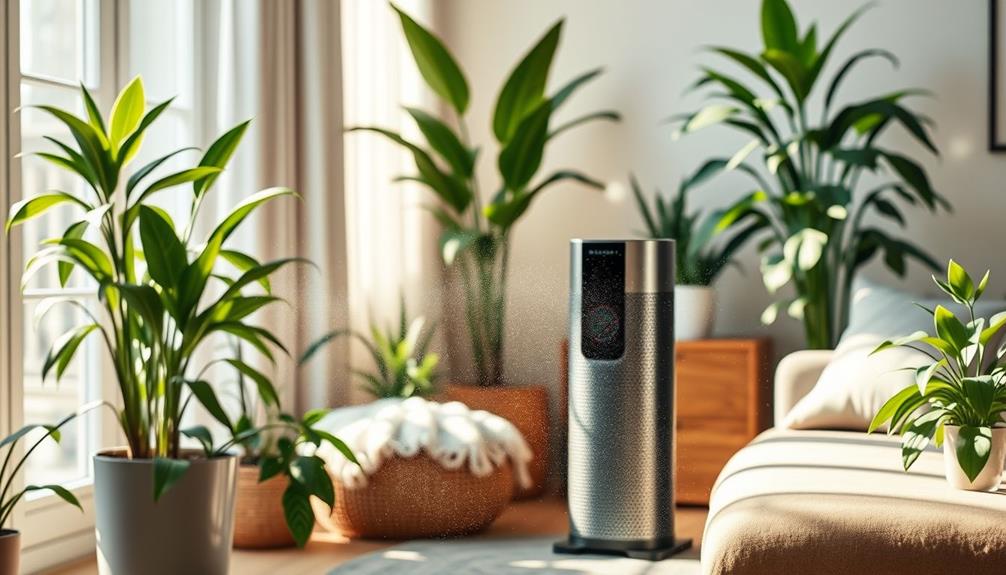
Understanding the potential risks of ozone emissions from ionizers highlights the significance of making informed choices for indoor air quality. To achieve clean air in your home, consider using an air purifier that effectively addresses various air pollutants, including volatile organic compounds (VOCs).
Additionally, maintaining a comfortable atmosphere can be enhanced by incorporating scented candles, which can improve candle care and ambiance. When reviewing a commercially available air purifier, prioritize devices for pollutant removal that feature high-efficiency filtration systems.
You might want to explore HVAC air cleaners, which can remove a wide range of particles like mold and bacteria when installed in ductwork. Regular monitoring of indoor air quality is vital for evaluating the performance of your air purification devices. This step guarantees a healthy environment and helps you identify any lingering issues.
Staying informed about academic research and safety guidelines regarding air purification technologies is key. By combining high-efficiency filtration with proper ventilation, you can mitigate airborne transmission of viruses, including COVID-19.
Don't forget to research product specifications and safety ratings before making a purchase; this will help you choose a highly effective air purifier that meets health standards and suits your specific air quality needs.
Conclusion
In the end, using an ionizer in your air purifier can be a double-edged sword. While they can boost your indoor air quality and help reduce allergens, you must be cautious of potential ozone emissions and other drawbacks. Think of it like a dance—finding the right balance between benefits and risks is key. Ultimately, staying informed will help you create a healthier home environment and breathe easier without the unwanted side effects.
